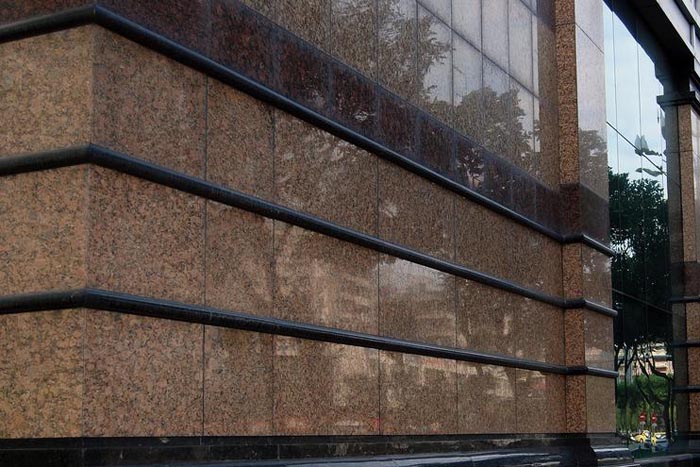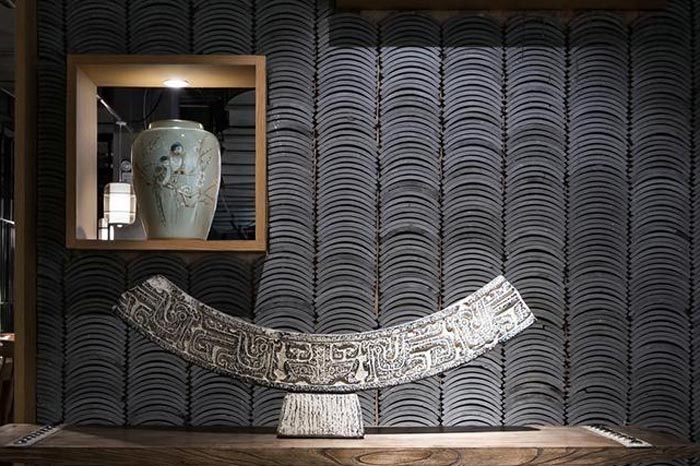Stone, as a high-end building decoration material, is widely used in indoor and outdoor decoration design, curtain wall decoration and public facility construction. Today, the editor of FABULOUS Group will take you to understand the advantages and uses of the four commonly used stone types.

1、marble
Marble originally refers to white limestone with black patterns produced in Dali, Yunnan. Its section can form a natural ink landscape painting. Later, "marble" is gradually used to refer to everything with various colors and patterns and used as building decoration materials. Limestone.
Advantages: high compressive strength and good physical and chemical properties, easy to process. Marble is generally softer in physical properties and is more suitable for walls and indoor floors than granite.
Application: The marble is very beautiful after being polished. It is mainly used for processing into various shapes and plates, which are used as the wall, floor, platform, and column of the building. It is also often used as a material for monuments, towers, statues, etc. . Marble can also be carved into practical works of art such as arts and crafts, stationery, lamps and utensils.

2、granite
Granite is a kind of tectonic rock formed by volcanic erupting lava in a molten state under considerable pressure and uplifting to the surface of the earth's crust. The magma is not sprayed out of the ground, but slowly cooled and solidified under the ground. It is a kind of deep formation. Acidic igneous rock belongs to magmatic rock.
Advantages: high load-bearing capacity; good compressive resistance and grinding ductility; easy to cut, can create thin plates, etc.; high density, difficult to invade stains. In short, granite has super durability.
Usage: Generally used for exterior wall packaging, roof, floor and various floor decorations. Granite is also suitable for door thresholds, cabinet countertops, and outdoor floors.

3、 cultural stone
Culture Stone is a collective term. Natural cultural stone can be divided into sedimentary sandstone and hard slate in terms of material; artificial cultural stone products are made of cement, sand, ceramsite and other inorganic pigments through professional processing and special steam curing technology.
Advantages: environmental protection and energy saving, light texture, high strength, good thawing resistance.
Usage: Generally used for building exterior walls or interior partial decorations, such as bars, villas, restaurants and other construction places to achieve the effect of antiques. Its application is very wide, it can be used in new buildings, and can also be used in refurbished old buildings. It can be used indoors and outdoors; it can be produced in any style and can be made in any color for any style.

4、sandstone
Sandstone is a kind of sedimentary rock formed by weathering, denudation, and transportation of source rocks in the basin. In the world, Australian sandstone, Indian sandstone, Spanish sandstone, and Chinese sandstone have been exploited. Among them, Australian sandstone is the most popular color and pattern among architects.
Advantages: Australian sandstone is an ecological and environmentally friendly stone. Its products have the characteristics of non-polluting, non-radiation, non-reflective, non-weathering, non-discoloration, heat absorption, heat preservation, and non-slip.
Usage: Sandstone is the most widely used stone material by mankind. Its noble and elegant temperament, natural and environmentally friendly characteristics have made it a wonderful flower in the history of architecture. The Louvre, the Royal Palace, Harvard University, Notre Dame Cathedral, etc., which were decorated with sandstone hundreds of years ago, still have their charm and classics.